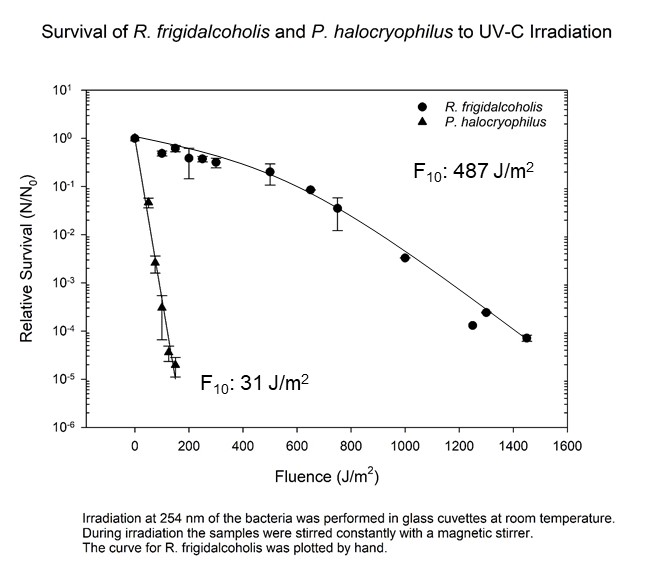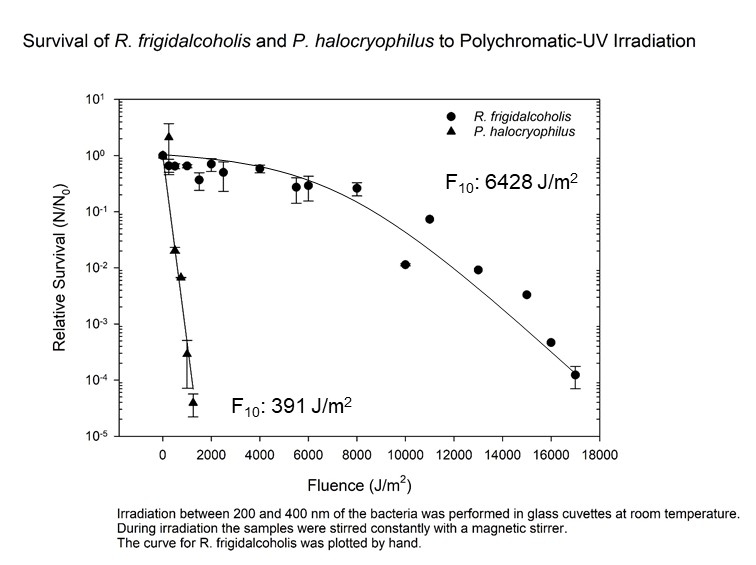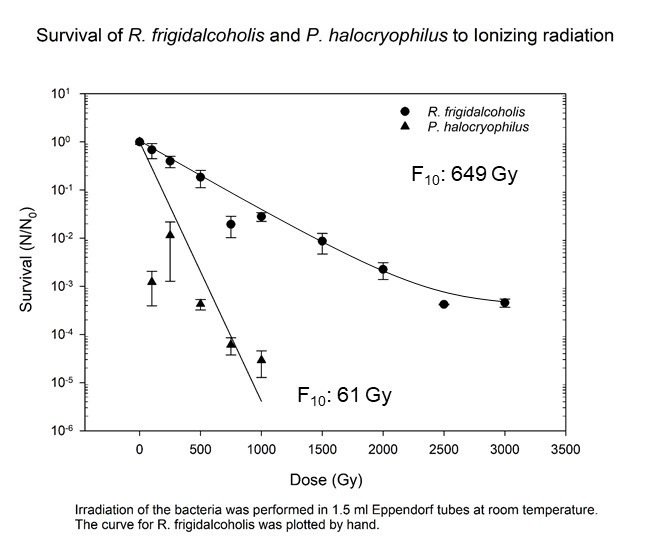Investigation of the physiological response of cold-adapted microorganisms to extreme environmental stress factors.
- 1German Aerospace Center (DLR), Institute of Aerospace Medicine, Radiation Biology department, Research group Astrobiology (tommaso.zaccaria@dlr.de)
- 2Radboud Institute for Molecular Life Sciences, Radboud University Medical Center, Nijmegen, Netherlands
- 3Section Pediatric Infectious Diseases, Laboratory of Medical Immunology, Department of Laboratory Medicince, Radboud University Medical Center, Nijmegen, Netherlands
- 4Department of Internal Medicine, Radboud University Medical Center, Nijmegen, Netherlands
- 5Department for Genomics & Immunoregulation, Life and Medical Sciences Institute (LIMES), University of Bonn, Bonn, Germany
Exploring the limits of life is one of the objectives for better understanding how organisms have arisen on Earth, how they tolerate extreme conditions and how they might survive on other planets or moons. These investigations could help with understanding which Earth microorganisms could survive on other celestial bodies, such as the icy Moons: Europa (Jupiter) and Enceladus (Saturn). Furthermore, it might help with indicating how life could have developed on Earth or on the icy Moons of the Solar system. This project focuses on the insights from prokaryotic, eukaryotic and archaea organisms which can tolerate the simulated subsurface ocean environment of Europa and Enceladus. The moons have been speculated to have subsurface oceans which are heated by tidal movements or hydrothermal vents. These combined factors could create an environment suitable for life. Furthermore, the mechanism of radiation, desiccation and temperature survival could help us understand whether the organisms could survive a hitchhike on spacecraft surfaces travelling to the moons. During space exploration it is essential to avoid the contamination of planets and moons of astrobiological interest by microorganisms from Earth.
The projects’ main question is: What are the boundaries of tolerance for cold-adapted halophilic microorganisms as determined by simulated space conditions? Furthermore, we also want to investigate the survival to simulated icy moon conditions. At this stage of the project two organisms have been investigated, the bacterium Planococcus halocryophilus and the yeast Rhodotorula frigidalcoholis. Our aim is to use one organism from each domain of life: prokaryote, eukaryote and archaea. Preliminary results have shown a fair survival of R. frigidalcoholis but not of P. halocryophilus to some simulated space conditions. In order to find better suited bacterial and archaea candidates we will be investigating cold adapted microorganisms from astrobiologically relevant sites. Examples include the Shaban deep, a brine sediment in the Northern Red sea, permafrost core, Antarctic soil samples, glacier ice and arctic sea-ice cores. The bacteria we have selected are the following: Paenisporosarcina antarctica, Psychromonas boydii, Cryobacterium flavum, Virgibacillus arcticus and Chromohalobacter saracensis. The archaea are: Halorubrum luteum and Halorhabdus tiamatea.
The results we processed have shown that R. frigidalcoholis is more tolerant than P. halocryophilus to monochromatic UV-C (254 nm) and polychromatic UV (200-400 nm) as well as X-ray. When exposed to desiccating conditions, at different temperatures, the difference between the two organisms is not so noticeable. The results which we present here have been developed from the microorganisms grown under minimal media conditions, supplemented with a sole carbon source (L-Glutamic acid for R. frigidalcoholis and D-Alanine for P. halocryophilus). The decision to use minimal media and single carbon sources, not as common as glucose, was in support of simulating stress growth conditions to an extent similar to the ones on Europa and Enceladus. Planetary bodies where some simple organics have been detected in low concentrations.
Despite the two organisms being isolated from similar environments, R. frigidalcoholis from ice cemented permafrost in University valley (Antarctic) and P. halocryophilus from permafrost active-layer soil in the Canadian High Arctic, they have great differences in their tolerance to extreme conditions. Tested conditions include desiccation survival at: room temperature, -20 and -80°C under oxic and anoxic conditions. Additionally, we can describe a fair survival of R. frigidalcoholis to weekly freeze-thaw conditions from -80°C to 25°C respectively.
Being two organisms isolated from arctic-like environments, our hypothesis supported a great tolerance to freeze and thaw conditions. The reduction in relative survival of R. frigidalcoholis to an order of magnitude of 10-2, supports our hypothesis. Of importance to note for this experiment are the -80°C freezing conditions. In the literature similar tests are conducted at higher temperatures (-40 and -10°C).
The preliminary results exposing R. frigidalcoholis and P. halocryophilus to harsh growth conditions are useful for initial expectations to survival in environments similar to the ones on Europa or Enceladus. For continuing and future research, this project could be of particular interest for defining a protocol for microbial exposure to simulated extreme environmental conditions. As well as to support the development of suitable planetary protection measures. The following graphs show the results of the described experiments. The figures include in formation on the relative survival of organisms and the F10 values for each condition. The F10 values have been included to represent the dose to which there is 10% survival to the exposed condition.
UV-C Irradiation:

Polychromatic UV Irradiation:

X-ray Irradiation:

How to cite: Zaccaria, T., Rettberg, P., Beblo-Vranesevic, K., De Jonge, M., and Netea, M.: Investigation of the physiological response of cold-adapted microorganisms to extreme environmental stress factors., Europlanet Science Congress 2022, Granada, Spain, 18–23 Sep 2022, EPSC2022-206, https://doi.org/10.5194/epsc2022-206, 2022.

